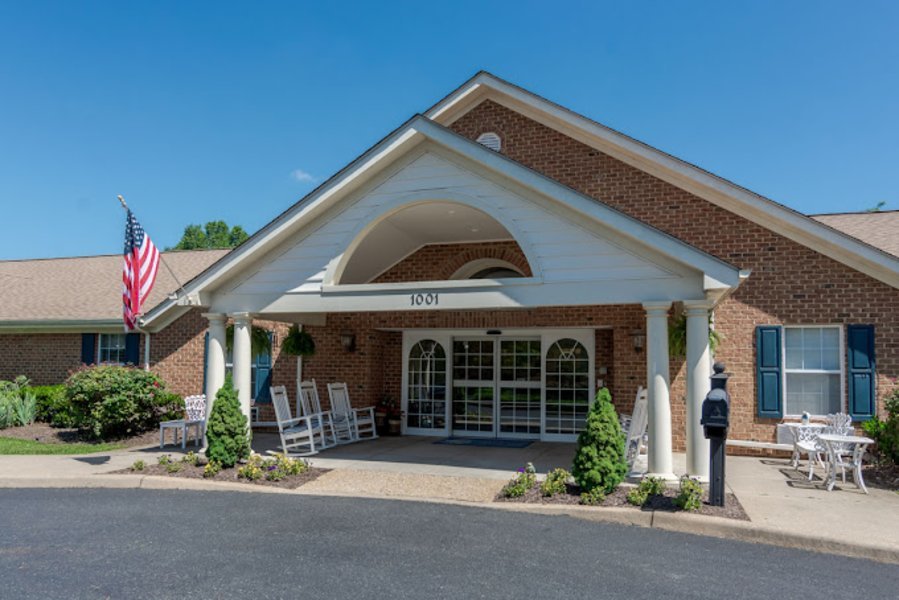Navigating the landscape of senior living can be a complex process, especially when it comes to understanding the financial implications of various living options such as Active Adult communities, Independent Living, Assisted Living, Continuing Care Retirement Communities (CCRCs), Memory Care, and Skilled Nursing facilities. A profound factor influencing the decision-making process is the concern over senior living cost, which encompasses a wide range of financial considerations including pension, social security benefits, and the potential sale of a house to fund these living arrangements[1]. Making informed decisions requires a detailed exploration of these costs alongside available payment, insurance, and financing options such as reverse mortgage, long-term care insurance, and veteran’s benefits.
This guide aims to shed light on the different types of senior living options available, the factors that play a crucial role in determining the overall senior living pricing, and how these costs compare across various facilities. Furthermore, it will delve into understanding the intricacies of payment and financing options, including financial assistance, to aid in making an informed decision regarding senior living. Detailed insights will be provided on leveraging personal assets, navigating care costs, and selecting a retirement community that not only meets the geographical preferences but also the level of care and quality of care desired.
Types of Senior Living Options
Understanding the spectrum of senior living options and their associated costs is paramount for making informed decisions. The landscape of senior living encompasses a variety of settings designed to meet the diverse needs and preferences of older adults. Here, we delve into the types of senior living options available, focusing on their costs and the level of care they provide.
- Skilled Nursing Facilities (Nursing Homes):
- Cost Range: $12,500 – $17,000+ per month
- Care Level: Offers 24-hour medical care by registered nurses (RN), doctors, and other medical practitioners. Ideal for older adults needing ongoing skilled nursing care.
- Features: Staffed with in-house nurses, focuses on medical care alongside socialization and activity programs for seniors.
- Home Health Care:
- Cost Range:
- Live-in with overnight care: $12,000 – $20,000 per month (living expenses extra)
- Daily assistance (6-8 hours/day): $5,400 – $8,400 per month (living expenses extra)
- Hourly Rate in New England: $23-$28/hour
- Care Level: Ranges from companionship services to skilled nursing care by professional caregivers, suitable for those not requiring 24-hour assistance.
- Features: Provides help with daily activities like transportation, medication distribution, and offers professional support for caregivers seeking relief.
- Cost Range:
- Assisted Living Communities:
- Cost Range:
- Standard Assisted Living: $4,500 – $9,000 per month
- With Memory or Alzheimer’s Care: $7,500 – $10,000 per month
- Care Level: Suitable for older adults who need assistance with medication management and activities of daily living (ADLs). Bridges the gap between independent living and skilled nursing care.
- Features: Offers meals, housekeeping, laundry, ADLs as needed, on-call staff, trained chefs, scheduled activities, and more.
- Cost Range:
- Continuing Care Retirement Communities (CCRCs):
- Entry Fee: $50,000-$450,000 or more
- Care Level: Offers various living options and care levels on one campus, providing an all-inclusive, maintenance-free lifestyle with professional assistance as needed.
- Features: Ideal for older adults in relatively good health who want a maintenance-free lifestyle and access to social activities, offering a balance between community living and independence.
The type of senior care facility significantly influences its cost, with Independent Living typically being the most affordable option, while Memory Care facilities and Nursing Homes tend to be more expensive. Luxury senior care communities can charge over $7,000 per month due to extensive amenities and programs. It’s crucial to weigh the cost against the level of care and services provided to ensure the chosen option aligns with the individual’s needs and financial situation.
Factors Influencing Senior Living Costs
Understanding the myriad factors influencing senior living costs is crucial for families and individuals as they navigate the complexities of planning for senior care. These factors range from the type of care required to the geographical location of the facility, each playing a significant role in determining the overall financial commitment.
- Payment and Insurance Options:
- Medicare: It’s important to note that Medicare does not cover the costs of assisted living, placing the financial responsibility on the resident and/or their families.
- Medicaid: For those with lower incomes who qualify, Medicaid can offer coverage for assisted living expenses.
- Long-term Care Insurance: This is a viable option for individuals who have been contributing to a policy over time.
- Veteran (VA) Aid and Attendance: Available to veterans and/or their spouses who served during wartime and meet the qualification criteria.
- Location and Services:
- The cost of senior living varies significantly based on the location and the range of services provided. For example, states like Massachusetts and New York see Independent Living costs ranging from $3,500 to $4,000 monthly, whereas in more affordable states like Illinois and Louisiana, costs can be between $1,500 to $2,000 monthly.
- Amenities play a large role in determining costs. Communities offering extensive amenities such as pools, fitness centers, and arts centers are likely to command higher fees than those without.
- The level of care required also directly impacts cost, with services for daily living activities and medication management available at an additional cost.
- Community Types and Amenities:
- Independent Living Communities: The cost varies depending on the state or region, housing prices in the location, and the size and type of the apartment, including amenities such as kitchens, private balconies, or storage spaces.
- Continuing Care Retirement Communities (CCRCs): Often charge a substantial entrance fee aside from the monthly fee, but may offer a lower monthly fee compared to rental-only communities. However, the total cost over time could be higher due to the upfront payment.
- Luxury and Services: More luxurious communities with a wide range of programs, social activities, and services are generally more expensive. Additionally, many communities provide concierge, transportation, and housekeeping services, which will add to the expenses.
The financial impact of choosing a senior living option is multifaceted, involving a thorough assessment of personal finances, available insurance coverage, and the specific needs and preferences of the individual requiring care. By understanding these critical factors, families can better prepare for the financial realities of senior living, ensuring a choice that aligns with both care requirements and budgetary constraints.
Comparing Costs Across Different Senior Living Options
When comparing the costs across different senior living options, it’s crucial to consider various financial aspects to make an informed decision. Here’s a breakdown of key cost components and comparisons:
- Financial Commitment and Fees:
- Community Fee: A one-time fee that may be required upon entry into a senior living community.
- Entry Fee: Applicable in some communities like Continuing Care Retirement Communities (CCRCs), this is a substantial initial payment.
- Monthly Fee: Almost all senior living options have a monthly fee that covers living expenses, amenities, and sometimes care services.
- Cost of Care: This varies significantly depending on the level of care required, with on-site nursing care often increasing the cost.
- Comparative Analysis:
- Home Health Care vs. Assisted Living: When evaluating Home Health Care, it’s essential to add all at-home living expenses to the care cost and compare this total to the monthly fee at an Assisted Living community. Home Health Care does not cover living expenses included in Assisted Living’s monthly fee.
- Nursing Homes: Generally, Nursing Homes are more expensive than Assisted Living Communities or In-Home Care due to the intensive level of medical care provided.
- Assisted Living vs. Medical-Based Care: Assisted Living costs are typically lower than medical-based care options like Memory Care or Nursing Homes but higher than remaining at home.
- Home Care Flexibility: Home Care is less expensive than most other care types because you remain at home, with costs varying based on the required care time.
- Practical Tools for Cost Comparison:
- Cost Comparison Worksheet: Tools like the Cost Comparison Worksheet offered by Harmony Senior Services can be invaluable. They help compare the cost of living at home against the expenses of moving into a senior living community, considering all associated costs and offering a clearer financial picture.
This analysis underscores the importance of evaluating all potential costs, fees, and the level of care needed when comparing different senior living options. By carefully considering these factors, individuals and families can make more informed decisions that align with their financial situation and care requirements.
Understanding Payment and Financing Options
Navigating the financial landscape of senior living requires understanding the myriad payment and financing options available to seniors and their families. This section outlines the various methods and programs that can help manage the costs associated with senior living facilities.
Payment Methods and Government Assistance:
- Personal Savings: Often the first line of financial resource, personal savings can be utilized for covering the initial costs of moving into a senior living community.
- Long-term Care Insurance: This insurance covers expenses that Medicare and other health insurances do not, including assisted living and nursing home care.
- Medicaid: For qualifying low-income seniors, Medicaid can cover some medical costs in assisted living, though not all facilities accept Medicaid.
- Medicare: While Medicare does not cover the cost of senior living facilities directly, it may help with medical expenses incurred in nursing homes or for skilled nursing care.
- Veterans Aid & Attendance Benefits: Eligible wartime veterans and their surviving spouses can receive funds to help cover the costs of assisted living.
- Fannie Mae and Freddie Mac Senior Housing Loans: Offer long-term financing options with up to 75% Loan-to-Value (LTV), catering to different senior housing projects.
- HUD-Insured Loans: Provide fixed-rate, non-recourse loans for the development and rehabilitation of senior housing properties.
- SBA 504 Loans: Designed for small business owners, including assisted living facilities, offering long-term, fixed-rate financing with only a 10% down payment.
- Conventional Loans: Available from banks and credit unions, though they typically have higher interest rates and more stringent credit requirements.
Innovative Financing and Savings Options:
- Reverse Mortgage: Allows seniors to convert part of their home equity into cash without selling their home, providing a stream of income to cover living expenses.
- Life Insurance Settlement: Converts an existing policy into cash that can be used for long-term care services, including assisted living.
- Annuity Income: Contracts with insurance companies designed to provide a steady income stream, which can be used to fund senior living costs.
- Discounts and Refundable Fees: Some communities offer discounts on future care services or refundable entry fees, which can result in long-term savings.
By exploring these diverse payment and financing options, seniors and their families can develop a robust strategy to manage the costs of senior living, ensuring financial security and peace of mind during the transition to a senior living community.
Making an Informed Decision
Recognizing the signs that indicate assisted living may be a beneficial option is a critical step in making an informed decision. Key indicators include:
- Increasing mobility issues or frequent falls
- Difficulty managing daily chores and tasks
- Forgetting to take medications regularly
- Inconsistent eating habits, missing meals
- Challenges with personal grooming and care tasks
These signs not only highlight the need for a supportive living environment but also stress the importance of anticipating future needs. It’s essential to proactively consider whether the current living situation is sustainable and if it meets both present and future accessibility requirements.
When exploring senior living communities, several considerations come into play to ensure the chosen community can meet current and evolving healthcare needs. Questions to ponder and discuss include:
- Community Visits: Make multiple visits to potential communities at different times to observe operations, and interact with residents and staff. This can provide a genuine feel for the community’s atmosphere and quality of care.
- Couples’ Needs: For couples, it’s crucial to discuss and align on wants and needs, especially considering scenarios where one partner’s health may change. Questions to consider:
- Can we live together if our care needs progress differently?
- Is there an option to stay in the same apartment, or will we need to consider separate accommodations?
- Are there additional costs for bringing in personal care or for couples living together?
- Amenities and Support: Inquire about the amenities, meal plans, and how the community facilitates a smooth transition for new residents. Understanding the level of on-site support available and any extra costs involved is vital for planning.
Addressing these aspects thoroughly can guide families and individuals through the complexities of choosing a senior living option that not only fits their immediate needs but also accommodates future changes in health and mobility. Engaging in open discussions with loved ones, and seeking advice from healthcare providers or financial advisors, can further support the decision-making process, ensuring a choice that offers peace of mind and a fulfilling lifestyle.
FAQs
Q: How much does assisted living typically cost per year in the United States? A: As of the latest data from the 2023 Genworth Cost of Care Survey, the average annual cost for a private room in an assisted living community has increased by 1.36% from the previous year, amounting to approximately $64,200, or $176 daily.
Q: What is the estimated monthly expense for assisted living in Florida? A: Based on the Genworth Cost of Care Survey projections for 2024, the median monthly cost for assisted living in Florida is expected to be about $4,371, which is lower than the national average of $4,917.
Q: Can you list the typical senior living arrangements available? A: The most prevalent senior living arrangements include independent living communities, assisted living facilities, nursing homes, memory care centers, and in-home care services. Additionally, there are other specialized senior living options designed to meet the diverse needs of older adults.
Q: What’s the average monthly cost for assisted living in New York State? A: According to the Genworth Cost of Care Survey 2020, the average monthly cost for assisted living in New York was reported as $5,991 in 2021. However, this average can vary significantly within the state, with areas like Ithaca reaching up to $13,500 per month.












